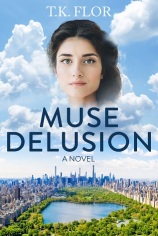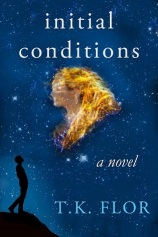“…I am not romantic, you know. I never was. I ask only a comfortable home; and considering Mr. Collins’s character, connections, and situation in life, I am convinced that my chance of happiness with him is as fair as most people can boast on entering the marriage state.”
Charlotte Lucas to Elizabeth Bennet, Pride and Prejudice.
One day a “lost” Jane Austen novel might be “rediscovered” in some attic. The news will spread across the world long before experts will have a chance to study the manuscript, and the few known facts will soon be drowned by speculations about its authenticity. Would it be deemed a forgery, even if the handwriting, the style and word usage are comparable with these found in Austen’s letters and previous works, but the story as a whole lacks the qualities that endeared Jane Austen’s novels to so many readers for such a long period?
One thing we can be sure about this hypothetical manuscript is that it will involve romantic relations and treat the institution of Marriage. Expectations from this institution have evolved considerably in the last couple of hundreds of years, and yet Austen’s treatment of the subject still appeals to modern readers. Or or at least so I thought until I read a recent article in The Atlantic that challenges this assumption. In a piece titled “What Jane Austen Thought Marriage Couldn’t Do”, S. Chamberlain makes claims based on evidence from Austen’s novels. In the following I will address some of those points.
Age of the heroines
“…novels like Pride and Prejudice and Sense and Sensibility focus too much on younger women at the expense of making older ones either irrelevant or ridiculous.”
Facts first: Jane Austen made her debut into Hampshire society at the age of seventeen, she was nineteen when she wrote the first draft of Sense and Sensibility, and twenty/twenty-one when she worked on the first version of Pride and Prejudice. Even in these early works Austen created true-to-life, memorable older women, like the sensible conformist Charlotte Lucas and the vulgar, irritable Mrs. Bennet. The ability to create women much older than herself doesn’t mean that the author wanted to contemplate them as her heroines. Simply put, why would a nineteen or twenty year old woman do so, when her pen conjured the lively Marianne Dashwood and immortal Elizabeth Bennet?
In later novels, Austen’s heroines grew older. In Persuasion, the twenty-seven year old Anne Elliot is accomplished, compassionate, and clear-sighted. Not only is she not “irrelevant”, but the discerning Mr. Elliot wants her as his bride, and captain Wentworth prefers her over the much younger and livelier Louisa Musgrove.
Matrimony as a questionable goal
“Miserable married lives in fact abound in Austen, from the badly matched Bennets at one particularly noxious end of the spectrum to the more ordinary, harried type of married parents who seem appallingly familiar to us moderns.”
Most of Austen’s heroines are romantic and intelligent young women, who despite all the matrimonial misery they had witnessed while growing up, feel rapturous joy at the prospect of entwining their future with the hero’s. Are they all delusional in believing that they would fare better than their parents? Or maybe, as the article questions, Austen was “slyly slapping down the institution with one hand even while she seemed to be raising it up onto its contemporary pedestal with the other?”
Based on the fact that Jane Austen never married (although she had the opportunity) and considering the unflattering portrayal of some couples in her novels, I will speculate that she did not see marriage as a woman’s highest goal, but rather as an option as appealing as the partners who make the marriage. The Bennets were ill-suited, and their match resulted in misery. Mrs. Bennet’s brother, “Mr. Gardiner, was a sensible, gentleman-like man, greatly superior to his sister as well by nature as education…Mrs. Gardiner, who was several years younger than Mrs. Bennet and Mrs. Philips, was an amiable, intelligent, elegant woman, and a great favorite with all her Longbourn nieces. Between the two eldest and herself especially there subsisted a very particular regard.”
Mrs. Gardiner is not a main character, but she is a mentor to her nieces, a role model who finds time to write them lengthy letters without neglecting her own four children, a wife who is a companion to her husband, a woman who has interests beside her household.
Chamberlain speculates that “Elizabeth’s marriage might turn out fine despite her lack of loving guidance and a model to follow.” I think that one should not worry about the fate of a marriage based on a solid foundation of love and mutual respect. Austen doesn’t elaborate about Elizabeth and Darcy’s relations after their wedding, yet we learn that “with the Gardiners they were always on the most intimate terms. Darcy, as well as Elizabeth, really loved them;” And Elizabeth becomes a role model for her younger, motherless sister-in-law:
“Georgina had the highest opinion in the world of Elizabeth; though at first she often listened with an astonishment bordering on alarm at her lively, sportive manner of talking to her brother…By Elizabeth’s instructions she began to comprehend that a woman may take liberties with her husband, which a brother will not always allow in a sister more than ten years younger than himself.”
Focus on children
“What Austen offers—and what her critics often disparage—is a focus on the temperaments of the individuals entering into a partnership, to the exclusion of her own century’s focus on future generations’ partnerships as the reason for why it is formed in the first place. If she’s more interested in the “happily” than the “ever after,” perhaps it’s because—in a time before reliable birth control—she resisted the new child-centered focus of marriage.”
Children of various ages inhabited both Jane Austen’s real and fictional worlds. She grew up in a large family (she was the seventh child out of eight). Her brother Edward married when she was sixteen and had eleven children. Other brothers also provided her with nephews and nieces. While the article brings up arguments by John Locke and Jean-Jacques Rousseau “that all good parenting began with a companionate marriage of equals who shared compatible child-rearing philosophies,” and follows with ideas about parents’ role in guiding their children, I doubt that philosophical musings had any bearing on how Austen’s family reared children. Her novels, with the exception of Mansfield Park, do not dwell on “right” or “wrong” parenting. Child-centered issues were usually an afterthought, an illustration of the relations between a couple, or within a family.
That said, I strongly disagree with the article’s claim that “her most content and companionate marriage — that of the Crofts, in her final novel, Persuasion — is notably childless. Admiral and Mrs. Croft spend their days helping each other drive around the countryside in a carriage that Austen rather firmly describes as meant for only two.” The Crofts are not the only “content” couple in Persuasion. The Musgrove and Harville families have children, and consequently child-related obligations. Unlike the Crofts, they cannot always be together, and yet their relations are wholesome and happy. And so are their children:
“Such excellent parents as Mr. and Mrs. Musgrove,” exclaimed Anne, “should be happy in their children’s marriages. They do everything to confer happiness, I am sure. What a blessing to young people to be in such hands! Your father and mother seem so totally free from all these ambitious feelings which have led to so much misconduct and misery, both in young and old!”
Much more could be argued about the complexity of Jane Austen’s worldview, but that goes beyond the scope of a blog post or an article in The Atlantic. Both cherry-picked examples that support their respective point of view. Or, to use the author’s own words from Persuasion:
“How quick come the reasons for approving what we like!”

Mr. and Mrs. Bennet. Hugh Thomson, 1894



